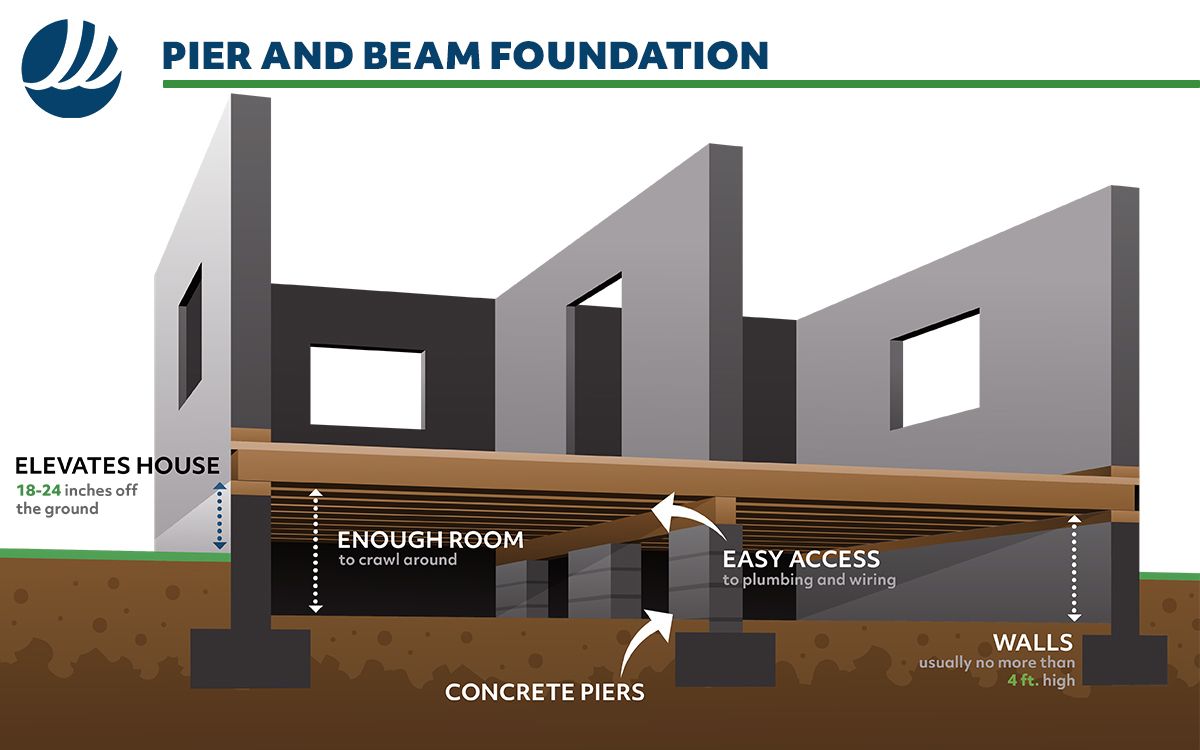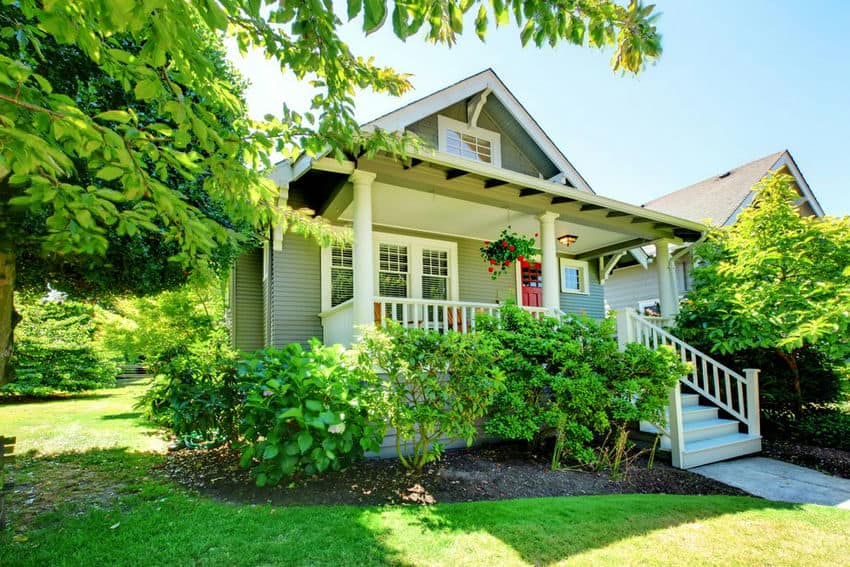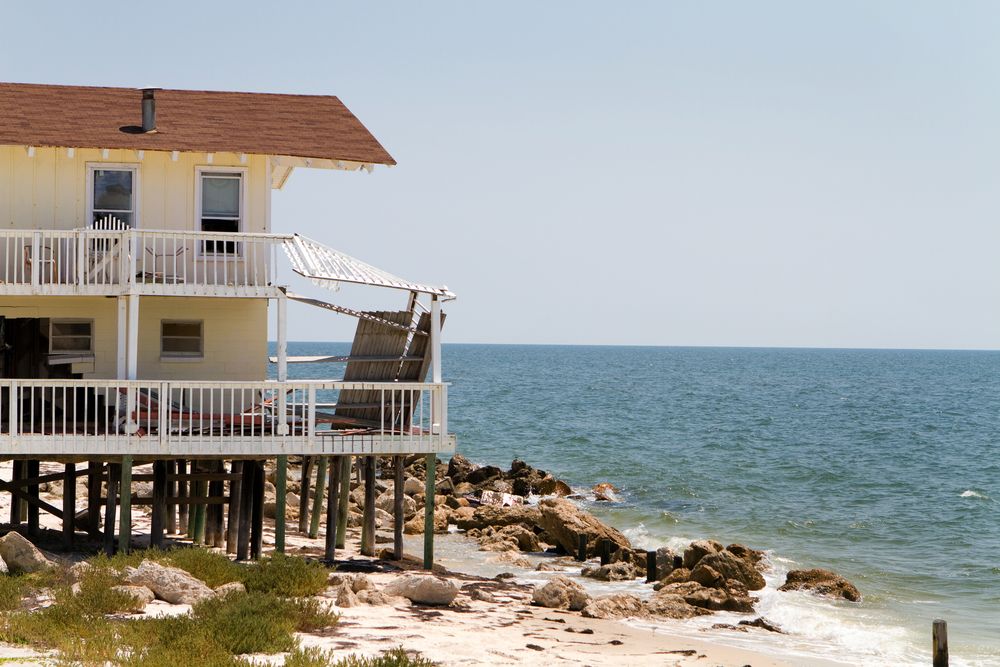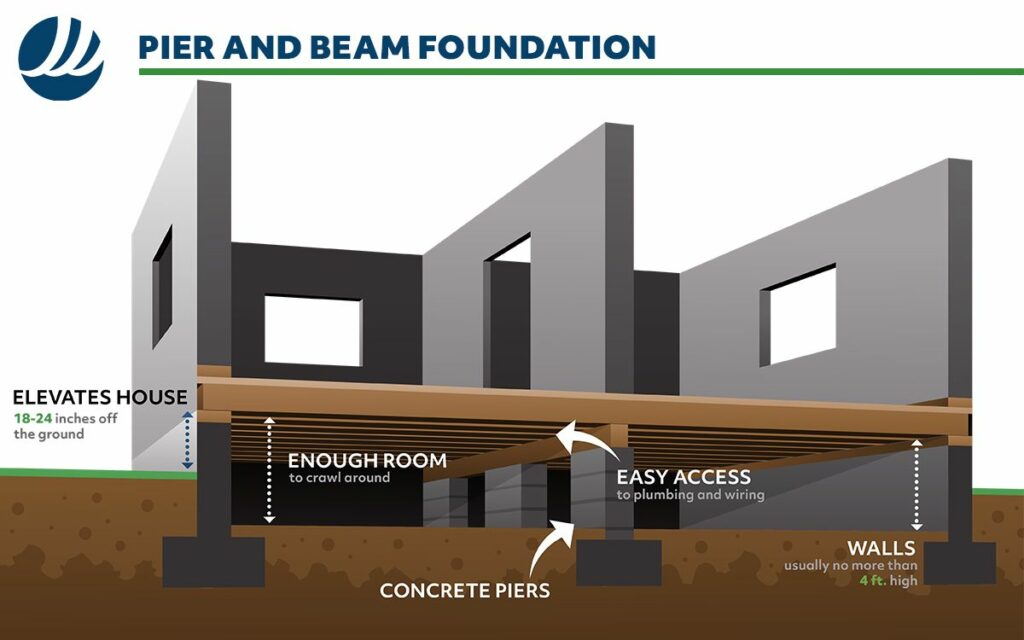
Wondering what is a pier foundation? If so, you’ve landed on the right page. This article is going to get you up to speed. You’ll learn the definition of a pier foundation, why you might want this type of foundation, the downsides of a pier foundation, common problems associated with pier foundations, and possible repair solutions.

What is a pier foundation?
A pier foundation is a foundation that sits on piers creating a space underneath. Many people refer to pier foundations that sit around 1.5 feet off the ground as crawl space foundations or pier and beam foundations. However, piers are also used to build ocean-front homes, which are usually raised more than 1.5 feet off the ground. The piers protect the home from punishing ocean tides.
Before the 1960s, pier foundations were very popular in the US. While they’re still being built, most new residential construction projects use slab foundations, which are easier and less expensive to build.
Benefits of a pier foundation
The following are some benefits of a pier foundation:
- If the crawl space under a pier foundation is encapsulated, it can be used for storage.
- The crawl space under a pier foundation provides easy access to the home’s wiring and plumbing.
- Because it elevates the structure sitting on top of it, a pier foundation offers protection from flooding and damage caused by ocean tides. This is why beachfront property is built on piers.
- Pier foundations are relatively easy to build and don’t require trucking in a large amount of concrete.
- Pier foundations don’t require heavy excavation and are less expensive to build than basement foundations. Because pier foundations require only minimal disturbance to the soil, they’re considered a green construction method.
- Some consider floors in pier foundation homes to be more comfortable to walk on because they give slightly.
- Pier foundations are usually less expensive to repair than slab or basement foundations. For example, plumbing problems under a slab foundation require breaking up the slab to get at the pipes. With pier foundations, the pipes are easily accessed via the crawl space.
Cons of a pier foundation
The cons of a pier foundation include,
- Pier foundations are more expensive to build than slab foundations. This is why slab foundations are more popular today.
- A certain percentage of air in the crawl space under a pier foundation goes up into the home’s living area. Therefore, if the crawl space is damp and full of mold and pest droppings, the air in your home will be full of allergens.
- Wood-eating pests can damage wood piers, beams, and joists, destabilizing the foundation.
- Problems with the piers can cause the floor to sag. Maybe the piers have settled, are spaced too far apart, or are too small and can’t adequately support the building. This can cause uneven floors, cracks in walls and floors, and problems opening and closing windows and doors.
- Pier foundations are not for large homes.
- Encapsulating the crawl space and adding insulation and a dehumidifier is an additional expense that requires maintenance.
- Water in crawl space – If water gets into your crawl space – from flooding, heavy rain, plumbing leaks, etc. – mold will grow on the wooden structures in the crawl space leading to various problems. You want your home’s crawl space to be clean and dry.
How do I know if my pier foundation is settling?
Signs of settlement in a pier foundation include:
- Bouncy floors
- Sagging floors
- Uneven floors
- Problems opening and closing doors and windows
- Cracks in sheetrock
- Musty odor (sign there’s moisture in the crawl space)
If you see any of the above, contact an experienced foundation repair contractor right away for an inspection. Catch problems early!
Pier Foundation Repair Solutions
The three most common methods for repairing a pier foundation are piers and crawl space support jacks. Piers are used when the home is experiencing settlement. Signs of foundation settlement include – but aren’t limited to – doors and windows that are hard to open and close uneven floors, stair-step cracks in brick or masonry, wall cracks, and floor cracks.
- Heavy-duty steel resistance push piers – Push piers are driven into the ground using the house’s weight and hydraulic pressure until they reach the load-bearing strata. Once they’re firmly in place, synchronized hydraulic jacks lift the house.
- Helical piers – Helical piers get their name because they’re shaped like giant corkscrews. They’re turned into the ground until they reach load-bearing soil, and then synchronized hydraulic jacks raise the house back to level.
- Crawl space support jacks – Sometimes, a pier foundation shows signs of foundation damage even though there’s nothing wrong with the foundation. For example, uneven floors, a floor that feels spongy when you walk on it, and furniture that shakes when you walk by. Usually, this is a problem with settled support posts in the crawl space or deteriorated screw jacks. The solution is to replace the posts or screw jacks.
How to prevent problems with a pier foundation
Since most foundation problems are caused by excess water in the soil around the foundation, you can prevent trouble by simply getting groundwater under control. Here are a few things you can do:
- Clean your gutters regularly – Clogged gutters can cause water to spill over the side of your home and into the soil around the foundation.
- Install one or more downspout extensions, if necessary – If your downspouts are too short, they’ll release water close to the foundation where you don’t want it. Downspout extensions direct the water away from the foundation before releasing it.
- Regrade your yard so that it slopes away from your home’s foundation – The yard around your home should slope away from the foundation. If it slopes toward the foundation, water will pool around the foundation.
- Don’t plant water-hungry vegetation near the foundation – When you water the shrubs, flowers or trees, you’ll be adding water to the soil around the foundation. You don’t want to do that.
- Install a drain tile system – A drain tile system works by making sure any excess water in the soil around the foundation has a way to drain off. There are two varieties of drain tile, interior, and exterior. Both are easily installed during construction. However, they can also be installed in an existing house.
If you’re in Kansas City and think your pier foundation home might have a problem, contact us today for a free inspection and repair estimate. We also provide all kinds of basement waterproofing and foundation repair services.








